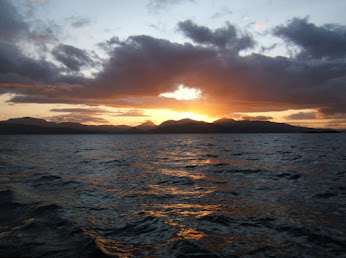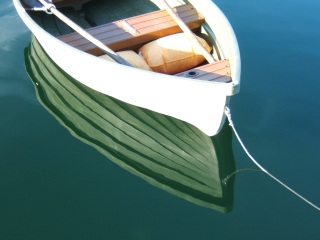Should not normally be mixed with water. But sadly most modern boats rely heavily on gadgetry and ours is no exception. Some things are just so useful to us that we make a concession, fit the thing and connect it up, then without realising it we soon come to rely totally on its functioning on demand every moment of the day.
One such gadget, known to us as 'The Dongle', we use for tapping into the Internet so we can, amongst other things, get a detailed weather forecast and update this blog. So far on our travels it has reliably found us an Internet connection of some sort almost everywhere we've been but for reasons known only to our internet provider the place we are currently using as a base from which to travel out to visit nearby interesting anchorages, Tobermory, is a T-Mobile black hole. Fortunately we anticipated this might happen somewhere along the way and we have a Plan B which comes into play. This involves touring the streets of whatever town or city we happen to be in until we locate a convenient wifi hotspot. These can be found almost anywhere these days, most usually in a café or pub, but the real trick is to use one without paying over any money. Which might explain why I was to be found lurking outside the An Tobar Arts Centre and café before it opened for business the other morning. Or there again it might not.

We have another gadget which can steer the boat for us using its own compass - the autohelm - and yet another which plots our position on a chart on its tiny screen - the chartplotter (more familiar to modern car drivers in its GPS road-based evolution). These two bits of equipment perform services for us, things we can easily do ourselves, but they take away some of the drudgery so we can relax, be more attentive to our surroundings and better enjoy the world around us.
In the last few months we have experienced problems with both devices apparently stemming from the embedded software, something equivalent to them having a mental breakdown and an unusual set of events, it seems. As it happens in both cases we were able to call the dealer here in the UK who provided technical support to get the gadgets going again, to re-start them so that they could remember what they were programmed to do in the first place. One such telephone call, made using a mobile phone from the middle of the Sound of Mull, gave me a key combination to press on the relevant gadget which I would never have found in a lifetime of trying, and all was well again. I'm not sure what this says about us, about the modern world or indeed about the gadgets themselves (which should not have gone wrong in the first place) but I do think it incredible that I was able to do this so easily from a rocky channel amid the Scottish mountains, and then just carry on sailing.
All of which has no relevance at all to the picture, which just sort of appealed to our sense of the ridiculous. Naturally we slowed our pace whilst passing the sign then once out of sight, speeded up again.



















